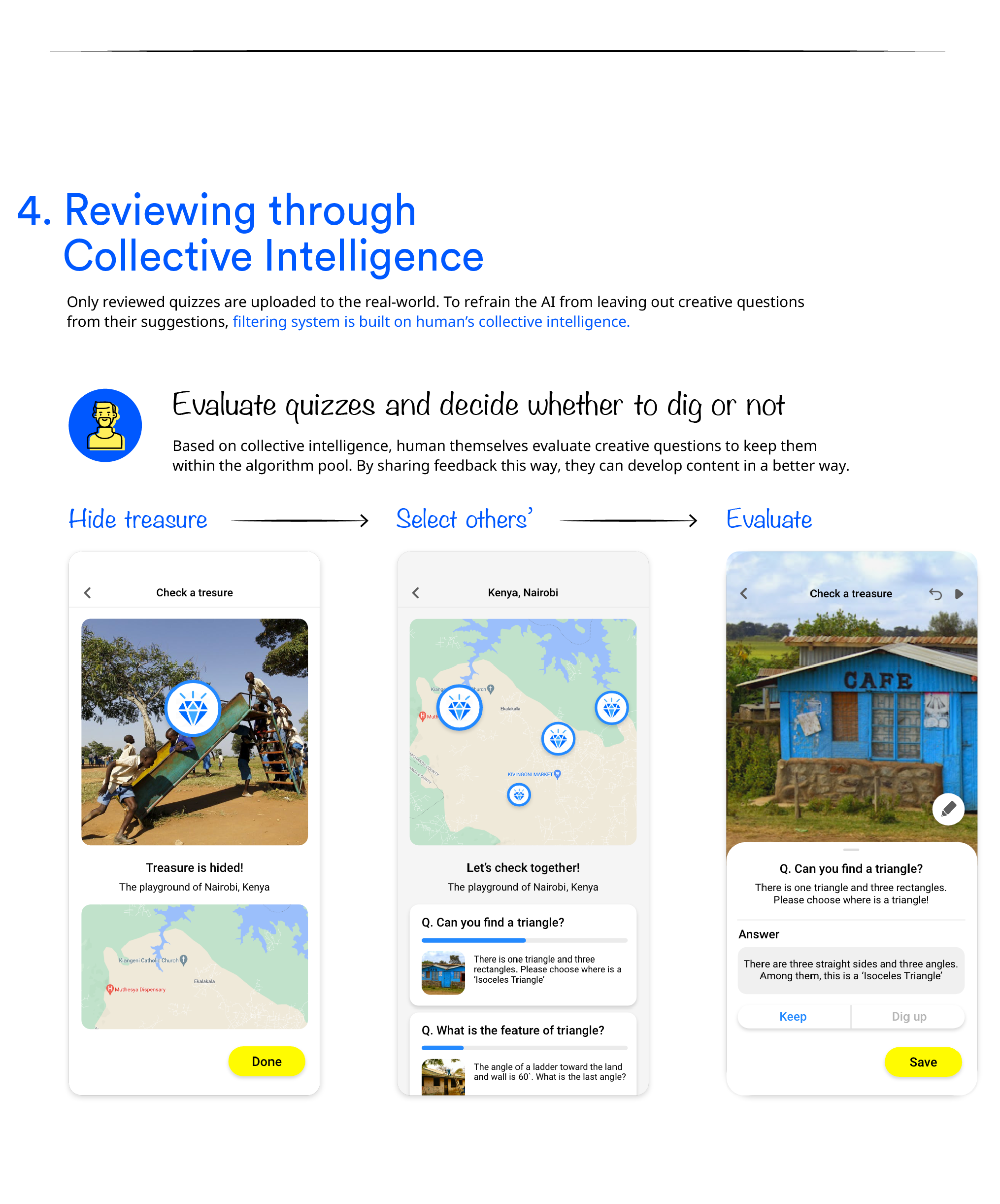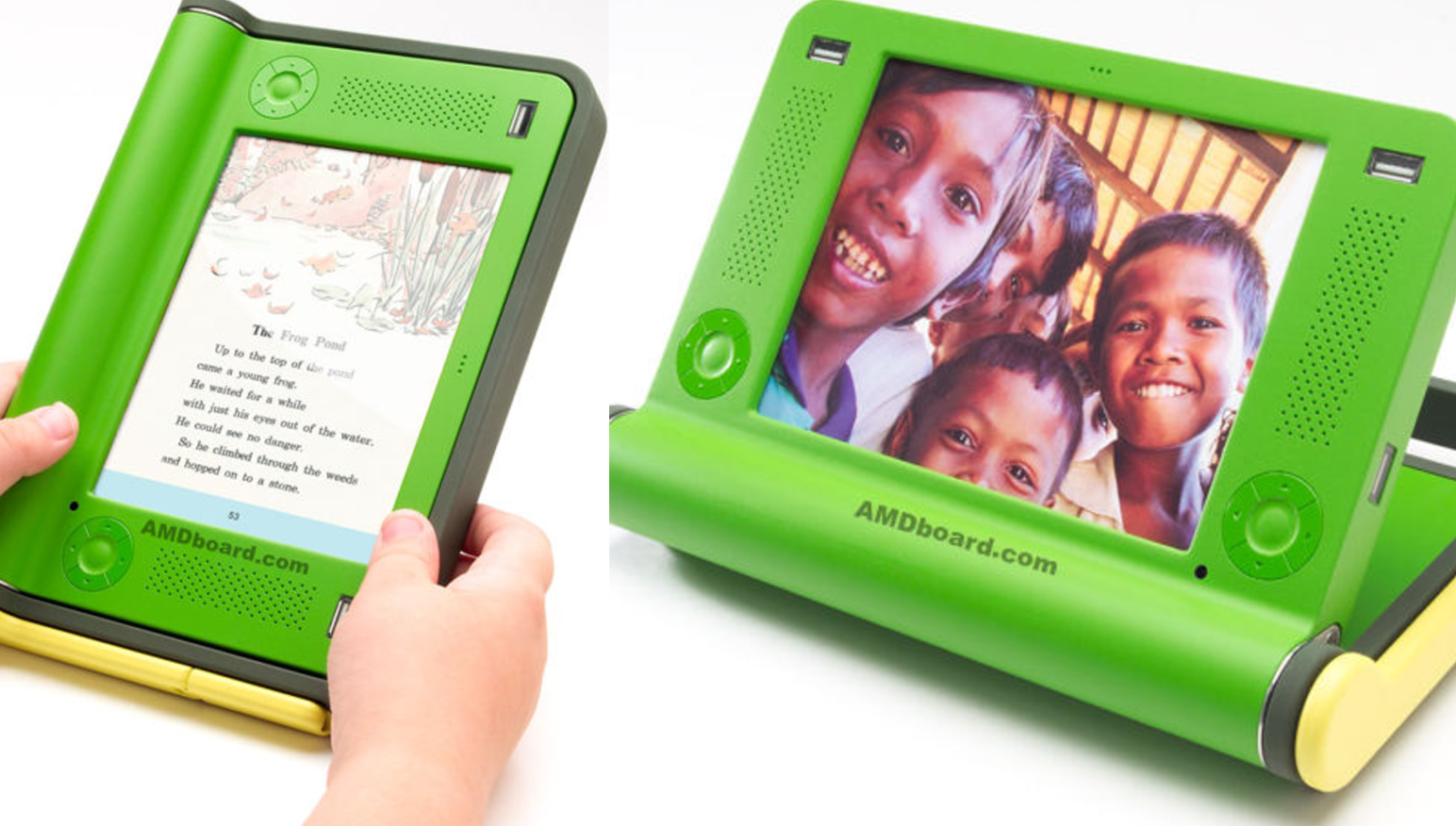AR solution for educational equality
Individual Project I Research, service design, UI/GUI/interaction design / branding I Renewed at 2021
#Computer Vision + Education
There are many children around the world who are not even receiving basic education. Number of teachers is insufficient and the high dropout issue of students who lost interest in studying remains.
By using ‘Augmented Reality’ and ‘volunteer’s collective intelligence’, students can learn mathematics or English through quizzes that reflect their everyday life.
This project is developed based on educational research — Play = learning: How play motivates and enhances children's cognitive and social-emotional growth. Singer, D. G., Golinkoff, R. M., & Hirsh-Pasek, K. (Eds.). Oxford University Press (2006)
Service Concept : ‘Treasure Hunting’
To make experience of learning in a fun way, children can explore educational contents with gamification. Children can learn Math and English as a game, beyond text book based conventional education.
How it works?
Volunteers make 1) Math / english AR quizzes using AR core based app and NLP, 2) Theme questions with the help of computer vision and tag recommendation. Then, students can solve problem in their everyday lives by selecting options, typing text, and using voice through Handwriting recognition and STT.
01
Hide AR quizzes in the real-world
Choose the place where to hide quizzes. With collective intelligence, volunteers can ‘hide AR quiz’ using objects in the environments.
02
Find and solve quizzes
If teacher is absent, children’s everyday lives turns into surrounding class. They can answer the quiz using various tools they want.
03
Reviewing and making better suggestions
By using collective intelligence, volunteers can evaluate or upgrade quizzes.
UX / contents direction
Based on educational & psychological research — Play = learning: How play motivates and enhances children's cognitive and social-emotional growth (2006)
01
Provide various contents : dealing with not only numbers and simple shape, but also space, measurement, operations on numbers.
02
Curriculum can be more challenging : Children like to count to high numbers, to read and write numerals, and to explore symmetries in the three dimensions.
03
Engaging in various physical activities : By adding activities such as jumping and walking, children can learn more effectively with enthusiasm.
UI / Visual system
Target region
First target : Africa - Kenya
Strong passion for education and has essential infrastructure such as Wi-Fi or smartphone supply. More severe problem is poor educational environment quality.
Second target : South Asia - Nepal
Having severe problem with child labor, lack of government effort to improve educational system with NGO.
Reviews
“ Sincere and passionate project.
I recommend Bfriend as the best graduate project for sustainable future. ”
— Professor Seungmin Park
“ This app seems realistic. Since we have cellphone but there is no proper educational content, our children can actively use this app in play time. ”
— Sakin (interviewee from Kenya)
“ Software approaches are well-thoughtout.
I think this is sustainable networking model with Kenyan”
— Seongyong Huh, CEO of Africa Insight
“Is this app really gonna be released? On previous apps, interaction was via email or text, whereas Bfriend uses its app. That’s what makes this service more motivating”
— Wongu Gang (long-term Donator)
Design Process
1. Background
Fifty percent of the world's children still do not even finish primary school due to economic problems, child labor, or poor educational environment, and poverty is being passed on to them. In order to clearly understand the current situation, I did desk research for two months on the reports of international organizations, the activities of NGOs. As a result, the following issues were resolved.
-

Non-completion of Elementary school worldwide
In 39 out of 88 countries, 50% of poor children are unable to graduate from elementary school. These inequalities lead to the succession of poverty.
-

Drop-out issue
50 million children around the world are not enrolled in school yet, and about 100 million children are unable to finish elementary school.
-

Shortage of teacher
There are lack of formally educated teachers, and the number of teacher is also shortage.
-

Innovative approach is needed
More improved version of education system, independent from teacher is needed in the developing countries.
2. Interview
In-depth interviews were conducted for a month to elicit vivid stories about the local education status, perception, and infrastructure in Kenya and Nepal. Interviewees was a representative of 2 education volunteers, 16 locals, and an NGO for sustainable education in Kenya. Through the interview, I found that insights from desk research was not an exaggeration, and This areas require software help rather than one-time financial help.3. Needs & Asset summary
Through Desk research and Interview, there were five needs and assets. Therefore, I found that providing software contents using the internet is more efficient than financial support such as buying some pencils and paper books.
4. Case study
Education innovation in slums
One of the biggest characteristics of slums is the very steep growth of the youth population. Therefore, the most needed in slums such as Nairobi in Kenya is the skill of learning. What is needed to embrace the poor is not electricity or water, but cell phones.
Appropriate Technology
Embrace warmer is a product that melts beeswax with warm water, not electricity, and helps low-weight newborns maintain a normal body temperature. It provides access to children who do not have access to incubators for less than $100.
failure case_OLPC $100 laptop
OLPC's laptops were distributed to several countries, including Peru, Uruguay to help educate children, but soon their use declined significantly. This is because of the lack of direct relevance to the required education in the local context.
Success case_Idea Box, Medecins Sans Frontiers
By providing access to the Internet, books, educational materials, plays, and movies, giving opportunities for experience to the poor who lack educational and cultural opportunities.
5. Design Strategy
‘ Sustainable model, melting into life ’ Using Collective Intelligence and computer technologies, Bfriend aims to provide interactive educational service between volunteers(tutors) and students(children), beyond a one-sided support like simply providing a book. Volunteers in developed countries and children in Africa networked with educational platforms, allowing volunteers to hide educational content in children’s activity area with collective intelligence, and children in Africa can find them and have fun learning through AR in their everyday lives.
2. Learning with interactive and creative ‘Theme’ question, beyond one-direction of traditional text books : Theme contents can provide ‘Cultural understanding’ of related themes.
1. Making question using environment : Based on educational research that children have great interest if they learn from educational materials using everyday objects/experiences, Bfriend provides a tool that can create AR quizzes based on people, objects, and environments encountered in daily life.
6. Service flow
Bfriend is an app where educational volunteers and children can continuously update each other's content and naturally network through. Tutors can hide 'AR problems' in the children's environment or make 'Theme problems'. When quizzes are uploaded to the platform, children can rent secondhand mobile phones and solve problems when the teacher is not present. In addition, if children take pictures of the surroundings again through the cell phone and upload them to the platform, it becomes a resource for tutors to create new AR problems.
7. Wireframe / UI / GUI Design
This service is meticulously built and realized into digital prototyping using Adobe XD






















